Entering the world of real estate can be very exciting, but oftentimes, understanding the terminology can be complicated. To help consumers better understand real estate terminology, I have prepared a short summary to assist home buyers and sellers in navigating their way through the housing marketplace. The following is a list of 10 common terms or phrases associated with the real estate process.
1. Appraisal:
A home appraisal is a survey of a home by a licensed professional for his or her opinion of the property‘s value (i.e., what a home will likely sell for on the open market). In most cases, an appraisal is done by a bank when a home buyer is applying for a loan for the home. The home appraisal is a detailed report that looks at such items as the condition of the home, the neighbourhood and what similar homes in that neighbourhood are selling for. An appraisal is not a home inspection (see #7 below). Appraisers only look for major concerns; they do not examine the home’s full condition (i.e., examine the roof, appliances, etc.). An appraisal also differs from a Broker’s Price Opinion (BPO) or Competitive Market Analysis (CMA), which provides an estimate of a home’s value by making comparisons to similar properties in the area and what they were listed and sold for. This is usually done for free by the prospective listing agent. To learn more about appraisals, visit the consumer’s section of www.appraisalfoundation.org.
2. Commission:
The commission is the compensation or fee that a real estate agent charges for performing the agreed-upon terms under a brokerage contract. The commission due for a real estate transaction is negotiable and usually paid from the seller’s funds at closing. The fee is typically calculated as a percentage of the total sales price and commissions vary from market to market. The commission is shared between the listing agent and the agent who represents the buyer, but the division is not always a 50/50 split. [Also, agents split their commissions with their brokers.]
3. Closing:
Closing, or settlement as it is sometimes referred to, is the final step in completing a real estate transaction. The closing date, set during the negotiation phase, usually takes place several weeks after an offer is formally accepted. At this time, ownership of the property is transferred to the buyer and any costs incurred by either the buyer or the seller beyond the price of the property itself are paid. These additional expenses are known as closing costs and might include recording fees, attorney fees, title insurance premiums, etc. Closing typically takes three weeks to 45 days depending on variables such as delays in obtaining documents, clearing title defects, inspection repairs, etc.
4. Existing Home Sales:
Existing home sales are an economic indicator of both the number and prices of single-family homes, condos and co-op sales over a one-month period – this figure does not include new construction. Each month, the National Association of Realtors (NAR) releases statistics on sales and prices of existing single-family homes for the nation and four regions. The existing home sales report, which includes footnotes on how the numbers are derived, is available at www.realtor.org.
5. Home Appreciation:
Home appreciation is the increase in the value of a property over a period of time. Short-term increases or decreases in value are triggered by factors such as employment rates, interest rates, housing supply, demand, affordability, crime rate, quality of schools in the area and proximity to a city. Additional factors such as upgrading a home can also result in home appreciation. What a home is worth depends on these elements, as they directly impact what a buyer is willing to pay for a particular property. While real estate moves in cycles and home values fluctuate regularly, real estate has consistently appreciated over the long term.
6. Home Equity:
Home equity is the value of ownership in a home that represents the current market value of the house — minus any remaining mortgage payments. This growing value is contingent on the property owner paying off the mortgage and the market value of the property appreciating. When a home is purchased, every dollar put towards the down payment is immediately transferred to the equity in the home. This is one of the many reasons why saving for a down payment is so important – a significant down payment helps homeowners build equity more quickly. For example, a home buyer who puts nothing down needs a year of 20 percent appreciation to have as much equity in his property as a buyer who put 20 percent down in a stable market.
7. Home Inspection:
A home inspection is a visual inspection of the structure and components of a home by a qualified professional to find items that are not performing correctly or items that are unsafe. A home inspector’s report will review things, such as the condition of the home’s heating and cooling systems, interior plumbing and electrical systems; the roof, attic, and visible insulation; walls, ceilings, floors, windows and doors; the foundation, basement, and visible structure. While the inspection is not meant to be a tool for re-negotiations, many times it becomes one. Homebuyers should be sure to make a list of items they think should be addressed and present them to their real estate agent in a timely manner. Oftentimes, the seller will agree to have the problems repaired before closing or accept a new offer that deducts the cost of repairs.
8. Housing Market:
The housing market refers to the supply and demand for houses in a particular country or region. Factors that affect the housing market include interest rates, the mortgage industry, economic growth, incomes, unemployment rates and population demographic trends. More specific definitions of “market” include:
- Buyer’s Market: A buyer’s market occurs when there is a larger inventory of homes available. In some cases, home appreciation has slowed in the short term, which means that homebuyers have the opportunity to purchase a home at lower prices.
- Seller’s Market: A seller’s market occurs when the demand for homes is great. In a seller’s market, potential sellers have the opportunity to sell their homes at a higher price than in the past due to a limited amount of properties available and a large number of potential buyers demanding them at current prices. Sellers and homeowners are also likely to experience higher appreciation in a seller’s market.
- Time on Market: The length of time in which a home is listed for sale is known as “time on market.” On many MLS listing sheets, this is also noted as D.O.M. – Days On Market.
9. Inventory:
Housing inventory is the number of existing homes available for sale each month. The most closely watched housing inventory measure is a month’s supply, which measures the latest housing supply in relation to housing demand. In May 2009, NAR reported that nationally the inventory of existing homes for sale fell, representing a 9.6-month supply at the current sales pace. (A six-month supply is considered a balanced market.) A decrease in homes for sale is a sign that the housing market is on its way to recovery, while a large supply of homes still available gives potential buyers more options in choosing the home that best fits their specific needs and wants.
10. Real Estate Agent:
A real estate agent is a professionally trained and licensed real estate expert who is involved in real estate sales and transactions. Though it is not required to hire an agent when buying or selling a property, the tasks an agent performs can be extremely complex and time-consuming. Therefore, it is in a consumer’s best interest to work with a seasoned real estate professional who can offer invaluable expertise and assistance, as well as insight into the local real estate market and neighbourhoods of interest.
- A Seller’s Agent: An agent who is hired to sell a home is responsible for marketing the home to potential buyers as well as other agents who are working with buyers. The seller’s agent ensures that the property is in proper viewing order and that he/she is familiar with everything about the property. Some specific responsibilities include:
- Assisting the seller in pricing the property appropriately
- Suggesting any necessary repairs to be taken care of prior to listing
- Exposing the property to a maximum number of buyers; arranging showings and providing feedback from prospective buyers
- Explaining all the contingencies, helping the seller to remain objective and make informed decisions based on current trends, market data, and individual needs
- Presenting and negotiating offers on the seller’s behalf
- Following through on the contingencies all the way to closing (e.g. making sure that the mortgage loan is applied for and granted within a certain timeframe, the home inspection is done according to schedule, and any necessary repairs are made prior to closing).
- A Buyer’s Agent: An agent representing a buyer will need to focus on what the buyer’s needs are, establish what amenities the buyer is looking for, what geographical area(s) are being considered, and how prepared the potential buyer is to buy and how much he/she is willing to spend. A buyer’s agent must also have a firm grasp of the surrounding area’s real estate market so that he/she can recommend alternative properties to the buyer. Once the home buying process begins, a buyer’s agent will be responsible for the following:
- Providing an honest analysis of each property, including both good and bad points
- Preparing an offer to purchase the property with terms favourable to the buyer
- Negotiating with the seller to obtain the property at the best price and terms for the buyer
- Providing the buyer with an estimate of the costs involved in the transaction and assisting the buyer in contacting the professionals necessary to complete the purchase, including mortgage services, title insurance and escrow companies, and home inspectors
- Monitoring performance of all others involved in the transaction to make sure all services are promptly and professionally carried out
- Accompanying the buyer to the closing to verify that all terms and conditions of the purchase agreement are met


